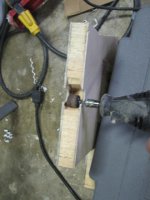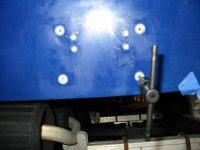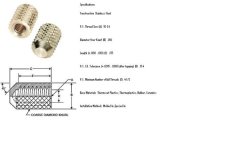I certainly agree with Westward about skin protection--and what degree of respiratory safeguards are available. However this ""suck" the hardeners out of the gelcoat placed over the epoxy" is a bit of a misnomer--see below for explaination of the role of improperly cured epoxy and gel coat hardening.
The epoxy has far better adherence than polyester materials; they are also far more resistant to intrusion of water. At one point I was also pesimestic about use of gel coat over epoxy. Proset (West Systems professional products, has done a large amount of testing on this subject). I rebuilt an 18 foot Century CC which fell 30 + feet in a dry stack blow down, using epoxy for the structural repair, and Spectrum gelcoat for the finish. 3 years later you cannot tell where the repairs were made and where gelcoat was put over gel coat/polyester or over epoxy.
The adherance of gel coat to epoxy is at times a problem, but there are techniques which will minimize this.
West systems adresses these issues at:
http://www.westsystem.com/ewmag/22/polyester.html
Another relitatively short answer I copied from West Systems is as follows:
There is a common misconception, fueled by some gelcoat manufacturers and by some expensive failures in the field, that gelcoat will not bond to epoxy. Polyester resin bonds poorly in a secondary (mechanical) bonding situation which consequently makes epoxy the resin of choice for repairs. How can one be squared with the other?
The answer is surprisingly simple - gelcoat does bond to a properly cured and prepared epoxy surface. There are a couple issues to be aware of to have success making this repair. There are three situations that cause gelcoat to not cure over epoxy... all related to the hardener chemistry. Epoxy hardeners are basically a blend of amines, which can terminate the chain reaction of the radical molecule that is the basis of polyester (and vinylester) cure chemistry. So by carefully mixing, curing, and preparing of the epoxy so that there are no unreacted amines to interfere with the gelcoat cure, gelcoat bonds quite well to epoxy.
The first situation is undercured epoxy. Gelcoat applied to undercured epoxy will be in contact with unreacted amines and the cure will be halted.
The second situation is if the epoxy is mixed off ratio so that it is hardener rich, again leaving unreacted amines free to interfere.
Third is the issue of amine blush, commonly called blush. Blush is a surface phenomena that is a reaction of the amine molecules at the surface with the carbon dioxide in the air. It forms easiest in the presence of moisture, so working in cool, humid environments will maximize the formation of blush. Any amine hardener has the potential to blush, but it can be minimized by careful choices of amines in the formulation. In fact, WEST SYSTEM 207 Special coating hardener is one of the lowest blushing hardeners on the market and still maintains structural properties on par with our other hardeners. Regardless of chemistry, blush is very easily dealt with because it is water soluble. A simple wash with clear water removes the blush. No soap, no solvents. Then sand that washed surface with 80 grit paper to provide the gelcoat with sufficient key so it won't run. Be sure to use non-air inhibited gelcoat that has a paraffin wax added. Gelcoat is applied over epoxy on a routine basis everyday in boatyards that are aware of these issues.
There are also gel coats which are specifically formulated to adhere with epoxies. Vinylester resins adhere better than polyester, and at times vinylester is used as a tie coat. Also tie coats for epoxy gel coat interface have been developed by :Neste, CCP, Duratec, intraplastic, Ferro, Scott Bader and others. There are any number of epoxy laminated boats which have a gel coated surface--however, I personally prefer 2 part LP painting of an epoxy composite.
As to applying epoxy to holes or under cut areas. You do not want to use un-thickened epoxy, such as in the two part tubes. You want to mix the epoxy with cabosil (fumed silica) as a thickener and a filler agent, such as medium density filler (depending on the application). I usually use a peanut butter thickness, and apply with a very thin spatchula, or a sliver of wood/tooth pick for application and packing down into the hole. The epoxy is left proud of the surface and then cleaned with water and sanded to make a surface for the gel coat. If you want to inject an epoxy, then buy the tubes which are available for caulking guns and then inject the thickened epoxy thru drilled holes....



